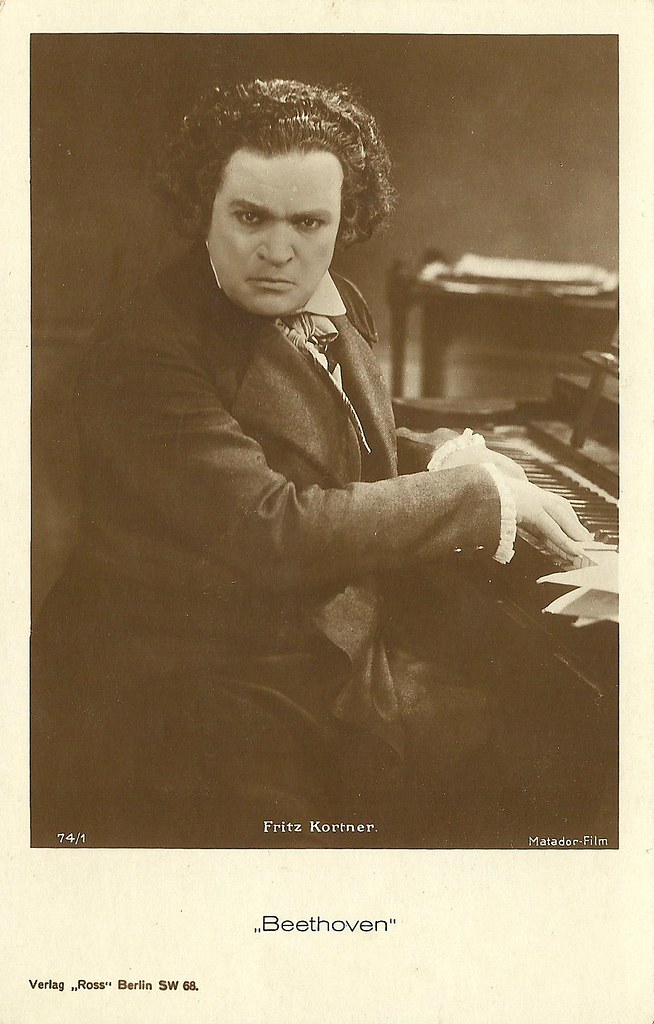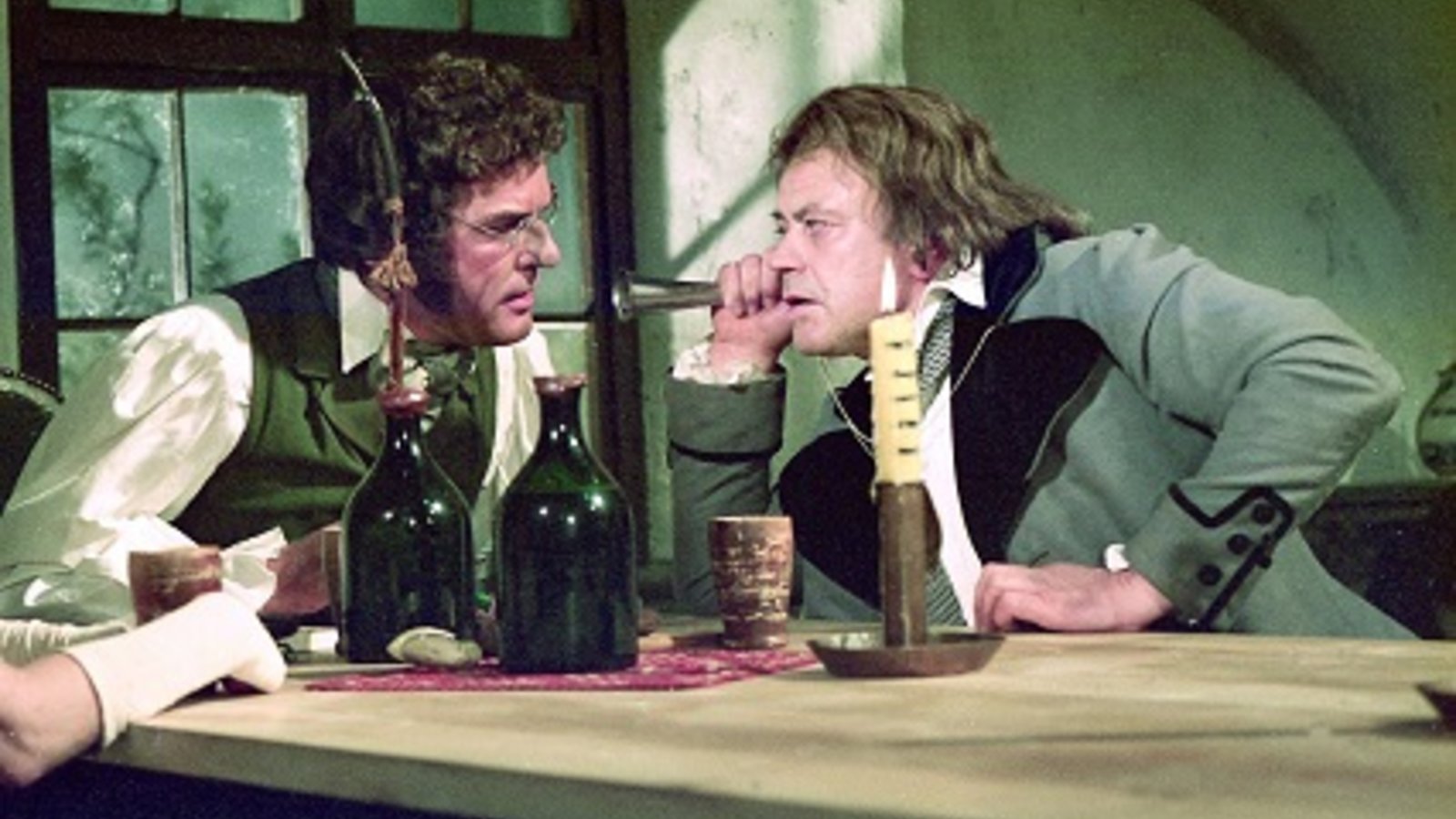All kinds of Beethoven’s music have been used in films – nothing quite says culture like our heroine sitting down at the piano and rippling a few tender tunes with her delicate fingers. The familiar sound of the Bagatelle No. 25 in A minor, WoO 59, aka Für Elise, has made an appearance in some 85 movies. The variety of the films is truly astonishing – it’s the music that links Bill and Ted’s Excellent Adventure with Django Unchained and Death in Venice with Rosemary’s Baby, Straw Dogs and Harry Potter.
Beethoven: Bagatelle in A Minor, WoO 59, “Für Elise” (Imogen Cooper, piano)
It’s the symphonies, however, that appear in the most movies. In a survey of over 900 films, the symphonies are used in over a third of them. The least-used symphonies are the ones we’re least familiar with: Symphony 1, 2, 4, and 8. The 3rd Symphony comes next, then the 6th, then the 7th and the two finalists are the fifth symphony (can’t resist that opening!) and the 9th Symphony, with the 4th movement Ode to Joy being the most popular of all symphonic movements.
What is the use of Beethoven’s Ode to Joy evoking for the listeners? In some cases, it’s an ironic overstatement, and in a very famous use, as an element for control in A Clockwork Orange. It can set a scene, provide a backdrop, show you something about the character.
Beethoven: Symphony No. 9 in D Minor, Op. 125, “Choral” – IV. Finale: Presto – Allegro assai (Yoko Watanabe, soprano; Yonako Nagano, alto; Akihiko Fujinuma, tenor; Yoshinobu Kuribayashi, baritone; Nikikai Chorus Group; Yomiuri Nippon Symphony Orchestra; Hidemaro Konoye, cond.)
Piano Sonata No. 14 in C Sharp Minor, Op. 27, No. 2, better known as the Moonlight Sonata, was in over 100 of our 900 films. From 1929’s The Last of Mrs. Cheyney, to five different films in 2019. How can a sound find its audience over 90 years of cinema?
Beethoven: Piano Sonata No. 14 in C-Sharp Minor, Op. 27, No. 2, “Moonlight”: I. Adagio sostenuto (Philippe Entremont, piano)
This is not even to start talking about Beethoven as a subject of film. One of the earliest films of the life of Beethoven was the 1927 Austrian silent film Das Leben des Beethoven, which found a suitably wild-haired composer in Fritz Kortner.

Fritz Kortner as Beethoven (1927)
A decade later, Harry Baur took on the role in Abel Gance’s Un grand amour de Beethoven.

Harry Baur as Beethoven (1937)
Lithuanian actor Donatas Banionis took on the role in 1976 in Beethoven – Days in a Life. This still shows him with ear-trumpet in hand.

Donatas Banionis as Beethoven (1976)
In Bill and Ted’s Excellent Adventure, American actor Clifford David took on the role of ‘Beet – oven’ as our intrepid heroes pronounced it.

Clifford David as Beethoven (1989)
The 2006 film Copying Beethoven, about the creation of the 9th symphony, transformed actor Ed Harris into the wild-maned man of Vienna.

Ed Harris as Beethoven (2006)
Over time, the filmic Beethoven has turned from an actor trying to imitate the painted images to a modern-appealing composer, good-looking and chiseled in his presentation. Beethoven never fails to be someone we seek to understand, either through application of his music to a life in cinema or application of his life to cinema to help us identify his genius. How does Beethoven figure in the soundtrack of your life?





This is “Beethoven” of the year 2002. It is a picture taken in 2020, shortly before the lock down became effective. I am working on a Beethoven project for four years that will go on for another 10 years. Performing all Beethoven sonatas as an amateur. It seems that the music is already influencing my face
Oh, I realize that I can not post picures. Never mind
An excellent movie of Beethoven’s life has been left out: This is the Austrian movie “Eroica” filmed in 1949 with Ewald Balser as Beethoven. See this at: https://www.youtube.com/watch?v=5BvUa6iNXag
Seriously that you guys completely forgot about Gary Oldman as Beethoven in Immortal Beloved????
beet-hoven is the Flemish pronunciation. It took on the German bate-hoven pronunciation after the composer moved to Vienna.
What’s your source for the survey of over 900 films? Thanks